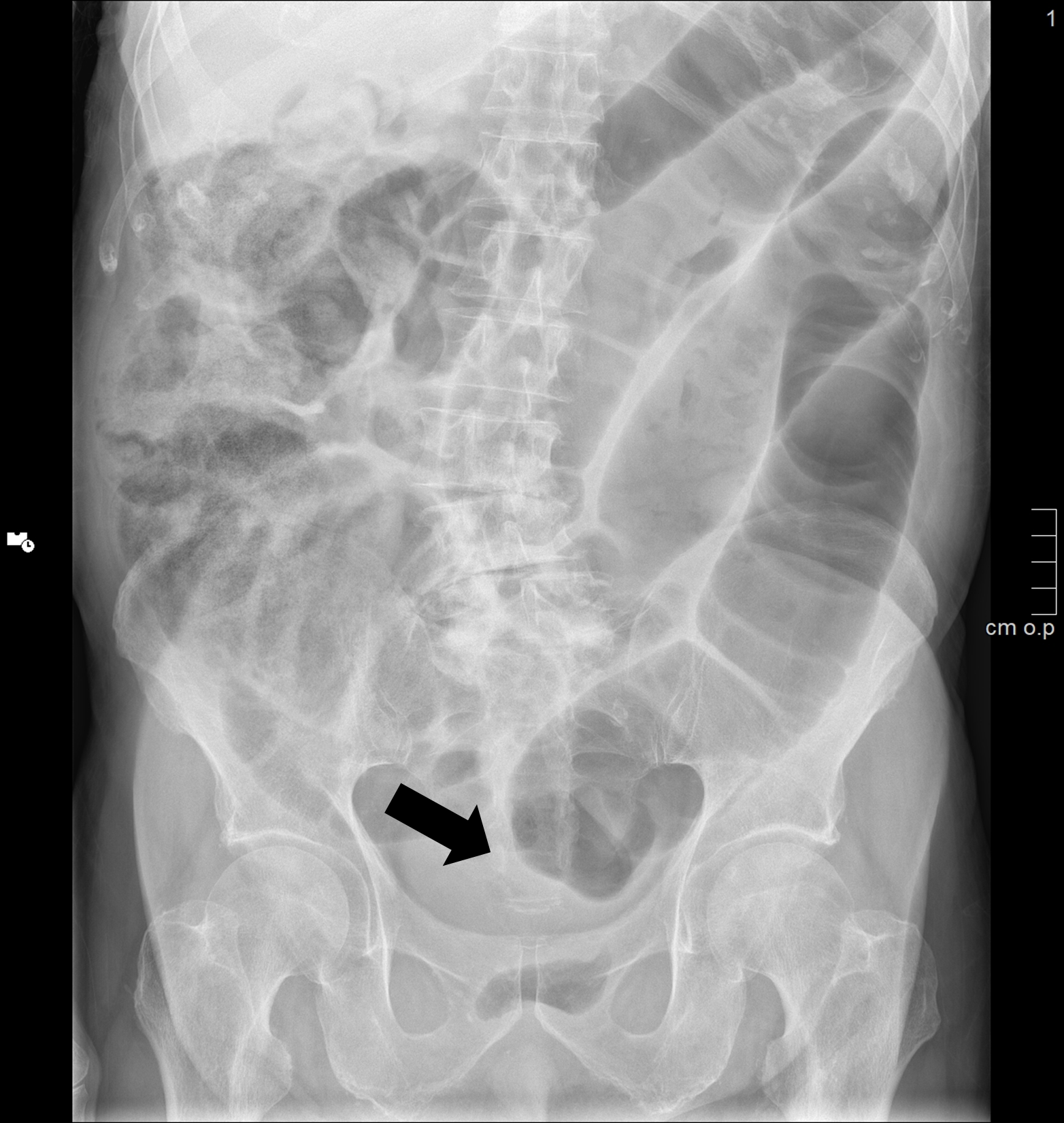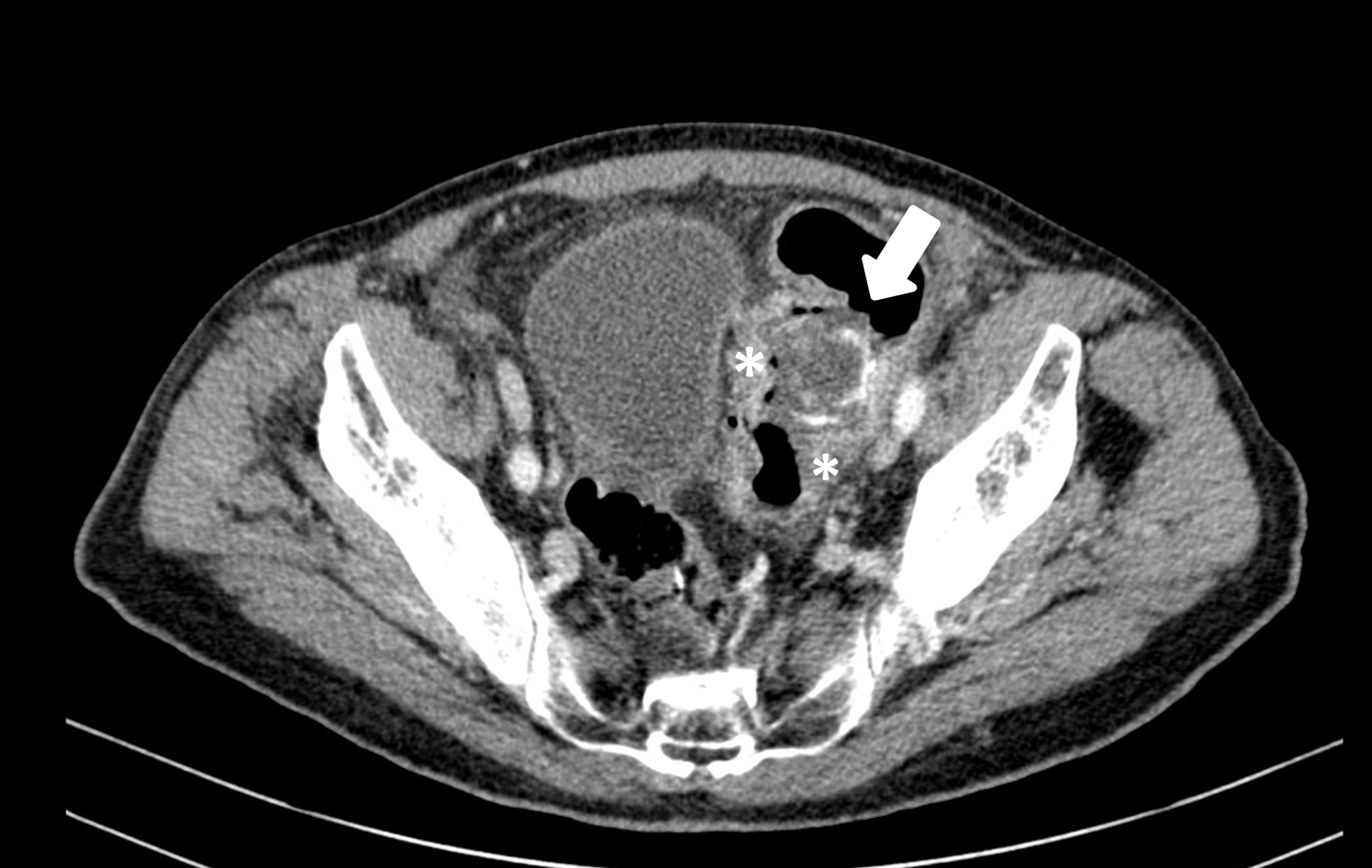Case report
We present a case of an 83-year-old man with a six-day history of lower quadrant abdominal pain and constipation.
In this context an abdominal radiography and an abdominal ultrasound were performed. The first showed colonic loops distension until the sigmoid level and the latter demonstrated intestinal loops distension, with non-progressive bowel movements. Free interloop fluid was also observed, suggesting an occlusion.
Therefore, a computed tomography (CT) was obtained to determine the obstruction level, in which a fistula between the gallbladder and the transverse colon was seen. The gallbladder had calculus and air. Practically all bowel loops were distended, and a biliary calculus measuring 36 mm was seen in the sigmoid bowel. At this point the bowel wall was thickened.
A colonoscopy for calculus extraction was performed but the inflammatory stenosis did not allow it. Therefore, an exploratory laparotomy was performed successfully removing the calculus.
Discussion
Gallstone ileus is a rare complication of biliary gallstones, representing only 1-4% of mechanical intestinal obstructions1 and is caused by the migration of gallbladder calculus through a biliodigestive fistula.2 This is more common in patients who have a history of acute cholecystitis, because the inflammatory process may approach the serosas of the biliary and intestinal tract, due to distention. With repeating inflammatory episodes, the serosas adhere and fistulisation may occur.1 Fistulisation to the gastrointestinal tract allows the passage of the calculi to the intestinal lumen until it becomes impacted at any level. Cholecystocolonic fistulisation is rare and only occurs in 10-25%, allowing direct passage of the stone to the colonic lumen.3
The stone size is also an important aspect, as stones smaller than 2 cm have a low probability of causing a colonic obstruction, unless there is some other process altering the colonic calibre.2 In this case the stone measured 36 mm and no underlying disease was found.
Most of these patients present with symptoms of mechanical obstruction, such as abdominal pain, distension, constipation and vomiting.2 Abdominal radiography and abdominal ultrasound are the first line exams in these scenarios.
A combination of intestinal distension, pneumobilia and ectopic gallstone constitute the pathognomonic Rigler’s triad of this disease in the radiography.1 However, these findings are only present in 40-50% of the patients.3 In this case only intestinal distension was seen in the radiography (Figure 1).

Figure 1: Abdominal radiograph showing diffuse intestinal loops distension (aster with stop signal at the sigmoid level (black arrow).
Ultrasound sometimes can reveal the ruptured state of the gallbladder. Free interloop fluid and non-progressive intestinal movements can also be identified, suggesting an occlusive episode.
CT is the best method to assess the obstruction cause. In this case, the marked intestinal loops distension was identified and a 36 mm calculus was found in the sigmoid. At this level the colonic wall was markedly thickened (Figure 2). At the gallbladder level a continuity solution between the gallbladder wall and the colon was observed (Figure 3).

Figure 2: Calculus in the sigmoid’s lumen (white arrow) and inflammatory thickening of the colonic wall (asterisk)
In these cases, enterolithotomy is the treatment of choice. Because this condition affects mostly elderly people with poor condition, gallstone ileus has a poor prognosis, with mortality ranging from 12% to 27%.2
Therefore, the radiologist should be aware of the clues to the diagnosis, allowing a prompt diagnosis and treatment and consequently minimizing the risk of complications.
















